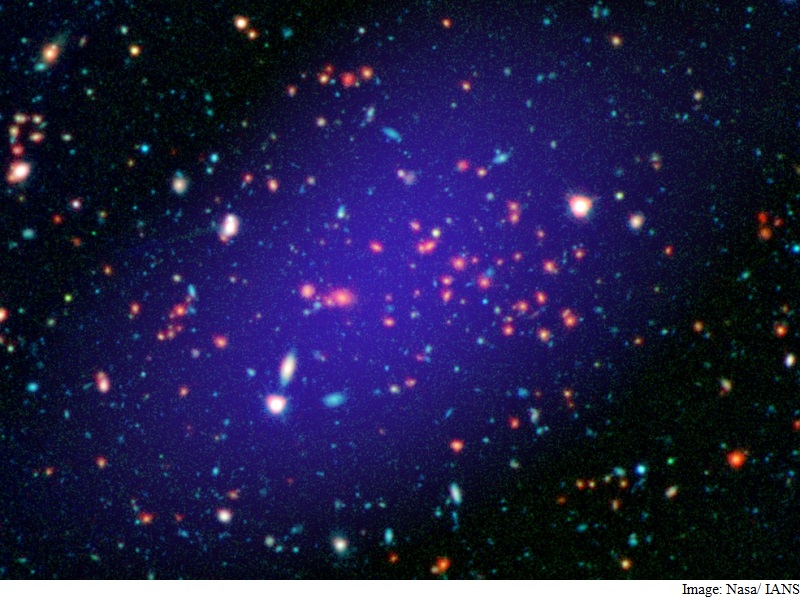- Home
- Science
- Science News
- Massive Galaxy Cluster Spotted 8.5 Billion Light Years Away
Massive Galaxy Cluster Spotted 8.5 Billion Light-Years Away

The galaxy cluster, located 8.5 billion light-years away, was spotted with Nasa's Spitzer Space Telescope and Wide-field Infrared Survey Explorer (WISE).
Galaxy clusters are gravitationally bound groups of thousands of galaxies, which contain hundreds of billions of stars.
The clusters grow bigger and bigger over time as they acquire new members.
"Based on our understanding of how galaxy clusters grow from the very beginning of our universe, this cluster should be one of the five most massive in existence at that time," said study co-author Peter Eisenhardt, project scientist for WISE at Nasa's Jet Propulsion Laboratory in Pasadena, California.
The galaxy cluster -- called Massive Overdense Object (MOO) J1142+1527 -- existed 8.5 billion years ago, long before Earth was formed.
In coming years, the team plans to sift through more than 1,700 additional galaxy cluster candidates with Spitzer, looking for the biggest of the bunch.
"Once we find the most massive clusters, we can start to investigate how galaxies evolved in these extreme environments," the authors noted in a Nasa statement.
Catch the latest from the Consumer Electronics Show on Gadgets 360, at our CES 2026 hub.
Related Stories
- Samsung Galaxy Unpacked 2025
- ChatGPT
- Redmi Note 14 Pro+
- iPhone 16
- Apple Vision Pro
- Oneplus 12
- OnePlus Nord CE 3 Lite 5G
- iPhone 13
- Xiaomi 14 Pro
- Oppo Find N3
- Tecno Spark Go (2023)
- Realme V30
- Best Phones Under 25000
- Samsung Galaxy S24 Series
- Cryptocurrency
- iQoo 12
- Samsung Galaxy S24 Ultra
- Giottus
- Samsung Galaxy Z Flip 5
- Apple 'Scary Fast'
- Housefull 5
- GoPro Hero 12 Black Review
- Invincible Season 2
- JioGlass
- HD Ready TV
- Laptop Under 50000
- Smartwatch Under 10000
- Latest Mobile Phones
- Compare Phones
- OPPO Reno 15 Pro Max
- Honor Win RT
- Honor Win
- Xiaomi 17 Ultra Leica Edition
- Xiaomi 17 Ultra
- Huawei Nova 15
- Huawei Nova 15 Pro
- Huawei Nova 15 Ultra
- Asus ProArt P16
- MacBook Pro 14-inch (M5, 2025)
- OPPO Pad Air 5
- Huawei MatePad 11.5 (2026)
- Xiaomi Watch 5
- Huawei Watch 10th Anniversary Edition
- Acerpure Nitro Z Series 100-inch QLED TV
- Samsung 43 Inch LED Ultra HD (4K) Smart TV (UA43UE81AFULXL)
- Asus ROG Ally
- Nintendo Switch Lite
- Haier 1.6 Ton 5 Star Inverter Split AC (HSU19G-MZAID5BN-INV)
- Haier 1.6 Ton 5 Star Inverter Split AC (HSU19G-MZAIM5BN-INV)

















